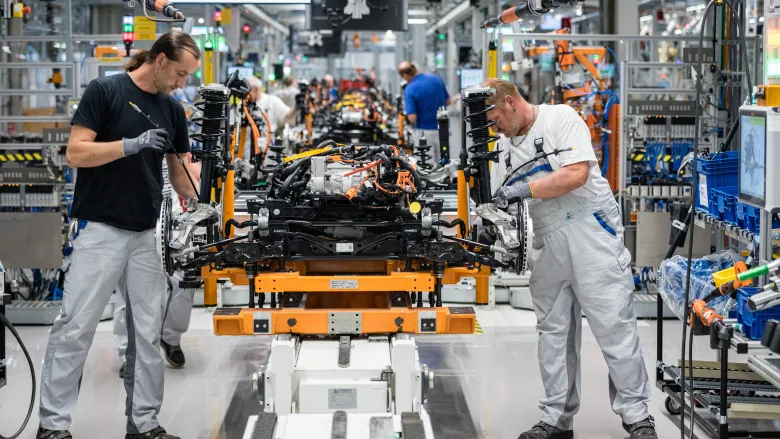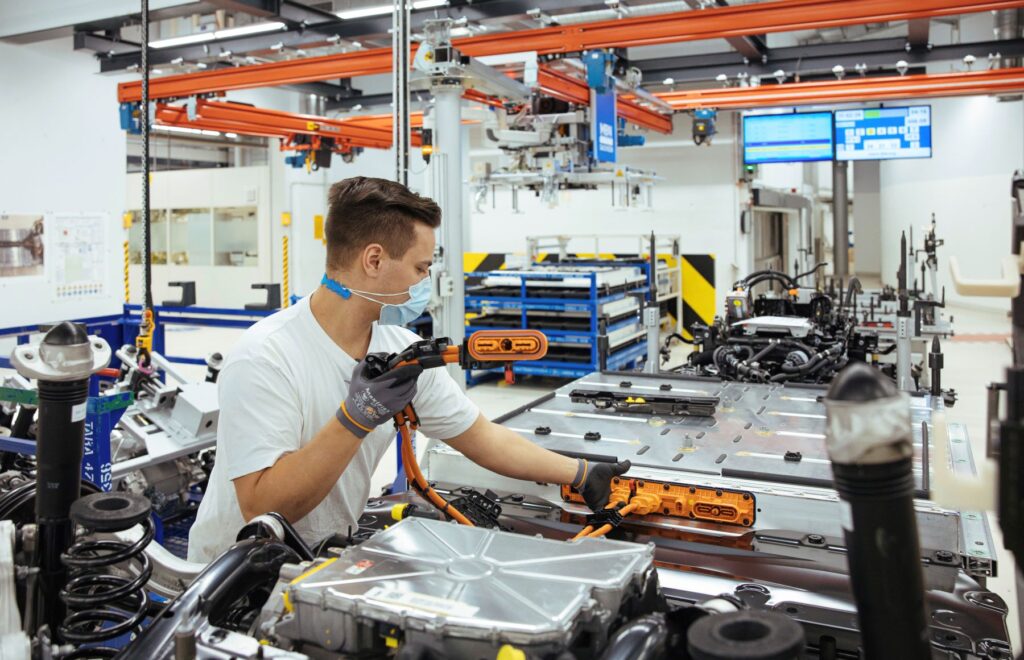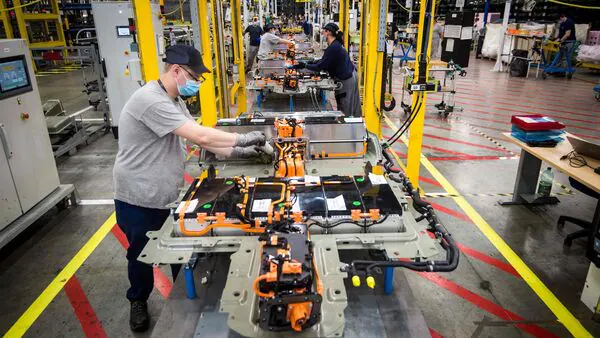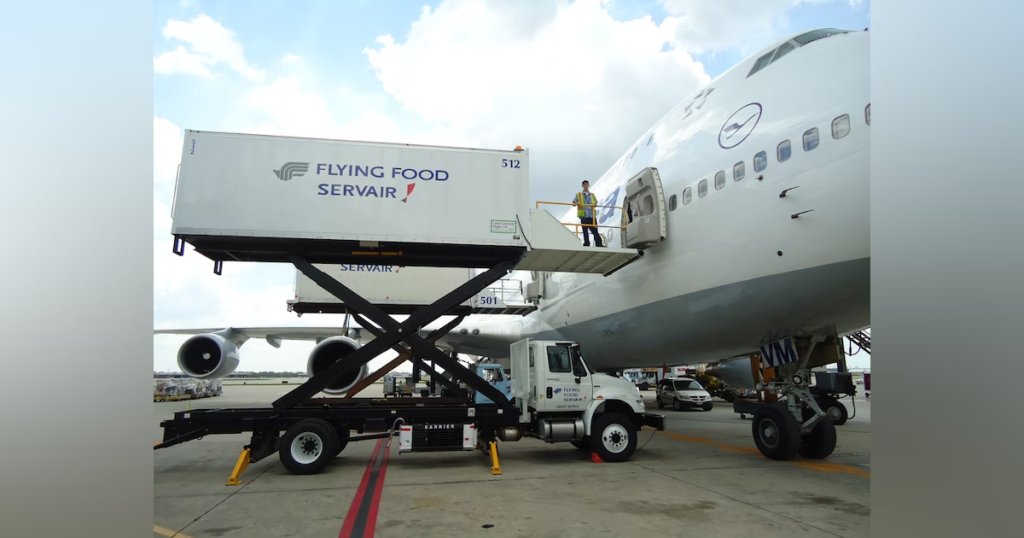Free Assembly Line Machine Setter Course (6Months)
Assembly Line Machine Setter:
Brief Job Description
Process/Machine Setters oversees assembly operation as per the required norms and assembly of aggregates in the vehicles &includes controls for machine operation, temperature and pressure including all machine settings.
Personal Attributes
The individual should be detailed oriented, observant, high precision working ,having reading, writing and communication skills, eye for detail and sensitivity towards safety for self and equipment. Problem solving and analytical skills are required to adjust the controls and settings to ensure the process continues to operate to specification. Knowledge of the materials being processed into a product is essential, as the settings will vary dependent upon the material being processed.


Maintain a safe and healthy working environment:
Elements and Performance Criteria
Identify and report the risks identified
To be competent, the user/individual on the job must be able to:
PC1.. Identify activities which can cause potential injury through sharp objects, burns, fall, electricity, gas leakages, radiation, poisonous fumes, chemicals ,loud noise
PC2. Inform the concerned authorities about the potential risks identified in the processes, workplace area/ layout, materials used etc
PC3. Inform the concerned authorities about machine breakdowns, damages which can potentially harm man/ machine during operations
PC4. Create awareness amongst other by sharing information on the identified risks
Create and sustain a Safe, clean and environment friendly work place
To be competent, the user/individual on the job must be able to:
PC5.. Follow the instructions given on the equipment manual describing the operating process of the equipments
PC6.. Follow the Safety, Health and Environment related practices developed by the organization
PC7. Operate the machine using the recommended Personal Protective Equipments (PPE)
PC8. . Maintain a clean and safe working environment near the work place and ensure there is no spillage of chemicals, production waste, oil, solvents etc
PC9. Maintain high standards of personal hygiene at the work place
PC10. Ensure that the waste disposal is done in the designated area and manner as per organization SOP.
PC11. Inform appropriately the medical officer/ HR in case of self or an employees illness of contagious nature so that preventive actions can be planned for others
Knowledge and Understanding (KU)
The individual on the job needs to know and understand:
KU1. relevant standards, procedures and policies related to Health, Safety and Environment followed in the company
KU2. basic knowledge of Safety procedures( fire fighting, first aid) within the organization
KU3. knowledge of various types of PPEs and their usage
KU4. basic knowledge of risks/hazards associated with each occupation in the organization
KU5. how to safely operate various tools and machines and risksassociated with the tools/ equipment
KU6. knowledge of personal hygiene and how an individual an contribute towards creating a highly safe and clean working environment

Generic Skills (GS)
User/individual on the job needs to know how to:
GS1. write basic level notes and observations
GS2. read safety instructions put up across the plant premises
GS3. read safety precautions mentioned in equipment manuals and panels to understand the potential risks associated
GS4. effectively communicate information to team members
GS5. informemployees in the plant and concerned functions about events, incidents & potential risks observed related to Safety, Health and Environment.
GS6. question operator/ supervisor in order to understand the safety related issues
GS7. attentively listen with full attention and comprehend the information given by the speaker during safety drills and training programs
GS8. use common sense and make judgments during day to day basis
GS9. use reasoning skills to identify and resolve basic problems
GS10. use common sense and make judgments during day to day basis
GS11. use reasoning skills to identify and resolve basic problems
Understanding process requirements:
Elements and Performance Criteria
Understanding all the requisite processes in detail and ensuring implementation
To be competent, the user/individual on the job must be able to:
PC1. . display detailed understanding of all the requisite processes to be adopted for completing the work order through reading the process manuals/ work instructions/standard operating procedures for the production job
PC2.. ensure first level drafting of process manuals, work instructions, control plans, process flow charts to enable the team to easily understand and implement the process
PC3. . ensure proper display of work instructions, control plans and flow charts at the correct places on the shop floor to enable timely and proper view of the documents
PC4. . share knowledge of processes , inputs and outputs with the operators and in order to enhance their skill levels
PC5.. maintain work flow by monitoring steps of the processes, setting variables, observing control points and equipment
PC6. . monitor various process parameters on a regular basis and ensure compliance to agreed standards (e.g. ambient air quality, stack monitoring, water quality monitoring etc.)
PC7. . ensuring recording and reporting procedures and systems are in place
PC8. . facilitating corrections to malfunctions within process control points
PC9. . ensure that all the tools and measuring instruments used on the shop floor are inspected, tested and calibrated internally/ externally as per the schedule
PC10. . support the shop head/ process head in arranging for the requisite usage certificates for the tools and equipment as per the internal guidelines of the organization
PC11.. ensure 5s implementation in the production line by analysing possible areas of systems and process improvements and ensureimplementation of the recommended measures to address the gaps
PC12.. ensure successful implementation of the completed poka yoke and kaizen on the running line
PC13.. support the shop head/ process manager in conducting first level audit of the manufacturing process on the shop floor
Process Improvement
To be competent, the user/individual on the job must be able to:
PC14. . ensure optimum resource utilization and wastage reduction through process improvements, kaizens, TQM, Poka Yoke etc. in the shift
PC15. . provide inputs for analysis of breakdown trends and current maintenance process to identify areas for improvement to achieve cost savings and reduce breakdown timing
PC16.. identify areas of improvement in the existing processes/systems and take measures to adhere to the identified kaizen/ process improvement initiatives
PC17. . ensure inputs from the line operators are considered while designing for various poka yoke
, kaizen initiatives
PC18. . encourage team members/ supervisor/ operators to suggest quality improvement measures through suggestion schemes, evaluate feasibility of the ideas and discuss their implementation with seniors
PC19.. support in analysing internal & external rejection data, planning and ensuring implementation of the corrective measures
PC20. . ensure team has understanding of basic analytical tools like why why analysis, 7 QC tools, TQM principles to analyse various problems and design process improvement activities
PC21. . support the process engineering/ industrial engineering team in modifications of the process flow, process/ plant layout to improve the process TAT, operational ergonomics, work quality etc.
Implementation of various initiatives
To be competent, the user/individual on the job must be able to:
PC22.. take overall responsibility to ensure adherence to safety standards by all employees and establish zero accident practice in the section
PC23.. implement various business excellence techniques like kaizen, 5s initiatives, etc. to enhance productivity for the plant/ shift

Knowledge and Understanding (KU)
The individual on the job needs to know and understand:
KU1. relevant manufacturing standards and procedures followed in the company in detail
KU2. different types of products manufactured by the company
KU3. knowledge of functional processes like Procurement, Store management, inventory management, quality management and key contact points for query resolution
KU4. quality norms and standards prescribed in the Quality Manual by the organization for painting
KU5. 5S and Safety norms practiced in the organization
KU6. different types of manufacturing processes used
KU7. requirement of raw materials used in the process
KU8. about tools, jigs and fixtures , their usage and maintenance methods
KU9. how to operate the machine in both, automatic and manual mode
KU10. basic understanding of robotics, CNC operations, data acquisitions systems, automatic recording instruments
KU11. using engineering drawings, sketches, control plan and work instructions in the plant
KU12. usage of various measurement tools like VernierCalipers, Micrometres, rulers, scales, weighing machines etc
KU13. basic arithmetic and calculation methods
KU14. how to handle electrical equipment and circuits, rectifiers and control panel etc.
KU15. different types of defects which may arise due to improper manufacturing and the impact of the defect on product performance
KU16. metallurgical and chemical properties of material involved
KU17. how to measure the correct specifications of the output in the terms of thickness, hardness, durability, tightness, finesse etc.
KU18. . various problems solving tools like 7QC, Why Why Analysis, Brain storming etc.
KU19. key areas of power consumption/ steam consumption, compressed air consumption etc
KU20. various data entry tools and formats used in the organization
KU21. ability to visualize the final product output and hence decide on the key steps and parameters to be followed
KU22. usage of various business correspondence tools like Email, MS Office tools ( Word, Excel, Power Point) etc.
KU23. about the various hazards related to various chemicals if used in the processes, the hazards involved in the process operations and usage of PPEs
Generic Skills (GS)
User/individual on the job needs to know how to:
GS1. create first level process manuals, Control Plans, Work Instructions in an manner that the operators can easily understand the process requirements and process steps
GS2. create small notes/ work documents/ diagrams for supervisors ,operators and helpers to help them understand the process
GS3. use emails and other business correspondence methods ( internal memos, circular etc. ) for communicating with other team members/ vendors/ suppliers etc.
GS4. read equipment manuals and process documents given by the equipment supplier to understand the equipment and processes better
GS5. discuss task lists, schedules, and work-loads with the operative team members
GS6. effectively explain supervisors, operators and helpers about equipment operations, process steps and other operational requirements
GS7. answer the queries raised by the operative team as well as intercompany departments
GS8. effectively communicate with the operators and helpers and make them aware of work expectations, targets, policies, processes etc.
GS9. attentively listen with full attention the queries and grievances raised by the operative team and comprehend the information given by the speaker
GS10. communicate effectively to the team members
GS11. identify conflicts in the team and try to resolve them at the earliest
GS12. interact and engage with the team members on a day to day basis
GS13. counsel and coach the operators and help them resolve issues
GS14. timely highlight to the management about any good work/ achievement by the operators and helper
GS15. break the problem into smaller issues and tasks to arrive at a solution
GS16. understand inter process relationship and establish relationship between various parts of the problem
GS17. leverage experience to find effective solutions to problems
GS18. use basic analytical tools to arrive at solutions
GS19. plan, organize and prioritize the work order and jobs received from the production manager
GS20. manage the schedule plan for the operators and helpers on the line/shift
GS21. validate all process/ equipment manuals so that the final process selected is correct
GS22. organize information, tools, manuals etc. on the shop floor so that sorting becomes easy
GS23. reorganize resources on the line/ shift in case of change of plans
GS24. use common sense and make judgments during day to day basis
GS25. use reasoning skills to identify and resolve problems
GS26. use intuition to detect any potential problems which could arise during operations
GS27. critically analyse solutions/ recommendations shared by operatives and supervisors for implementation
GS28. accept additional responsibility for self and the team
GS29. encourage self and other to take greater responsibilities
GS30. ensure that the work allocated to the team is completed as per timelines and quality norms
GS31. identify obstacles and bottlenecks in the process and on own find basic level solutions for removing these obstacles
GS32. motivate and provide support for the team on the shop floor
GS33. encourage collaboration between team members
GS34. resolve team issues and grievances to manage conflicts within the team
GS35. create an environment of approachability, trust and openness within the team
GS36. ensure role clarity for all operators and helpers on the line/ shift
GS37. escalate any team related issues to the concerned person at the right time
GS38. identify defective parts in the manufacturing line by comparing manufactured pieces with the work standard
GS39. link the defect observed with the overall impact on the performance of the component/ automobile
GS40. support and contribute in monitoring and delivering high quality output from self and others
GS41. train team members on maintaining quality standards set by the organization
GS42. use previous experience in resolving problems and taking decisions
GS43. make timely and independent decisions on the line/ shift within the boundaries of the delegation matrix of the organization
GS44. familiarise with leading practices available in the market
GS45. think independently on new approaches to manufacturing process, material management, data management and team management
GS46. represent any new ideas/ approaches on process improvement and productivity improvement to the seniors in the team

Manage the production related operations:
Elements and Performance Criteria
Manpower Management
To be competent, the user/individual on the job must be able to:
PC1.. undertake effective shift planning based on manpower allocation and shift handling of place right manpower on the right workstation in coordination with production in-charge to achieve production targets
PC2.. support the shop head/ process head in finalizing the shift rosters for the week and month based on the production plan available
Material Management
To be competent, the user/individual on the job must be able to:
PC3.. send inventory requirements to stores and purchase department and follow up with stores and purchase to ensure timely receipt of material (spares, consumables)
PC4.. ensure that the incoming raw material quality is inspected and meets the production requirement
PC5. . ensure that the material and work piece movement on the shop floor conforms to the TAT time prescribed in the SOP/ work plans so that production targets are met for the line/ shift
Supervise Production Operations
To be competent, the user/individual on the job must be able to:
PC6. . ensure that the production plan shared by the ppc team is fulfilled during the shift/ across lines
PC7. . coordinate with various functions like material management, stores, paint shop, assembly line, quality, safety, production planning etc. to ensure communication of required information and resolution of queries
PC8.. responsible for end of line inspection under supervision
PC9.. ensure that the operators and helpers have the required tools and equipment at the start of the process
PC10.. identify & implement action steps to reduce losses and wastages during shift operation and ensure minimum rejection of components
PC11. . observe and note the consumption of energy, fuel, steam on the production line and utilize these inputs for optimization of various factors of production
PC12. . support the maintenance team in finalizing the preventive maintenance schedule for the shop
PC13.. ensure that the operator and helper are using the required personal protective equipment like goggles, masks, gloves and other ppes at the time of conducting the painting operation
Conformance to Product and Process Quality
To be competent, the user/individual on the job must be able to:

PC14.. conduct random incoming quality inspection of material and provide the relevant feedback on the same to the store
PC15.. conduct quality inspection of the process parameters, lab parameters and wip products and provide necessary feedback to the line leaders
PC16.. conduct quality inspection of the first sample/batch to ensure that the quality of the product produced meet customer requirements
PC17.. conduct inspection and analysis of the defects observed in the process and products
Data Collation and Analysis
To be competent, the user/individual on the job must be able to:
PC18.. prepare daily and monthly production mis reports to match actual performance vis–vis the targets and report the same to production in-chart
PC19.. verify the production and material movement related data entries in the system ( manual/ erp) for the shift and ensure correctness of the data
PC20.. ensure compilation of data of breakdown maintenance and reporting the same to the maintenance team
PC21.. collaborate with the maintenance team in conducting detailed breakdown analysis to understand problems, look out for process/ machine modifications and resolve the issues
PC22.. conduct random sampling of the process parameters, finished goods and WIP products and provide necessary feedback to the line leaders
PC23.. collaborate with the quality management and inspection team in conducting detailed analysis to resolve issues
PC24.. collaborate with various supervisors to capture process data points as mentioned in the internal operating guidelines for data analytics
PC25.. support the shop head/ process head in analysing the various data points related to production, maintenance, manpower deployment, material management, costs etc.
PC26.. support the shop head/ process head in creating various analytical presentations required for process/ shop/ plant review
Knowledge and Understanding (KU)
The individual on the job needs to know and understand:
KU1. relevant manufacturing standards and procedures followed in the company in detail
KU2. different types of products manufactured by the company
KU3. knowledge of functional processes like Procurement, Store management, inventory management, quality management and key contact points for query resolution
KU4. quality norms and standards prescribed in the Quality Manual by the organization for painting
KU5. 5S and Safety norms practiced in the organization
KU6. different types of manufacturing processes
KU7. requirement of raw materials used in the process
KU8. about tools, jigs and fixtures , their usage and maintenance
KU9. how to operate both in automatic and manual mode
KU10. basic understanding of robotics, CNC operations, data acquisitions systems, automatic recording instruments
KU11. different types of defects which may arise due to improper manufacturing
KU12. basic Arithmetic and calculation methods
KU13. ability to visualize the final product output and hence decide on the key steps to be followe
KU14. about handling of electrical equipment and circuits, rectifiers and control panel etc
KU15. metallurgical and chemical properties of the material under usage
KU16. how to measure the correct specifications of the output in the terms of thickness, hardness, durability, tightness etc
KU17. how to visualize the final product output and hence decide on the parameters of temperature, pressure, current and voltage
KU18. various problems solving tools like 7QC, Why Why Analysis, Brain storming
KU19. usage of various business correspondence tools like Email, MS Office tools ( Word, Excel, Power Point) etc.
KU20. about the various hazards related to various chemicals if used in the processes, the hazards involved in the process operations and usage of PPEs
Generic Skills (GS)
User/individual on the job needs to know how to:
GS1. create first level process manuals, Control Plans, Work Instructions in an manner that the operators can easily understand the process requirements and process steps
GS2. create small notes/ work documents/ diagrams for supervisors ,operators and helpers to help them understand the process
GS3. use emails and other business correspondence methods ( internal memos, circular etc. ) for communicating with other team members/ vendors/ suppliers etc.
GS4. read equipment manuals and process documents given by the equipment supplier to understand the equipment and processes better
GS5. discuss task lists, schedules, and work-loads with the operative team members
GS6. effectively explain supervisors, operators and helpers about equipment operations, process steps and other operational requirements
GS7. answer the queries raised by the operative team as well as intercompany departments
GS8. effectively communicate with the operators and helpers and make them aware of work expectations, targets, policies, processes etc.
GS9. attentively listen with full attention the queries and grievances raised by the operative team and comprehend the information given by the speaker
GS10. communicate effectively to the team members
GS11. identify conflicts in the team and try to resolve them at the earliest
GS12. interact and engage with the team members on a day to day basis
GS13. counsel and coach the operators and help them resolve issues
GS14. timely highlight to the management about any good work/ achievement by the operators and helpers
GS15. identify problems occurring on the shop floor
GS16. break the problem into smaller issues and tasks to arrive at a solution
GS17. understand inter process relationship and establish relationship between various parts of the problem
GS18. leverage experience and technical expertise to find effective solutions to problems
GS19. use basic analytical tools to arrive at solutions
GS20. collaborate with cross functional teams to resolve problems
GS21. plan, organize and prioritize the work order and jobs received from the production manager
GS22. manage the schedule plan for the operators and helpers on the line/shift
GS23. validate all process/ equipment manuals so that the final process selected is correct
GS24. organize information, tools, manuals etc. on the shop floor so that sorting becomes easy
GS25. reorganize resources on the line/ shift in case of change of plans
GS26. use common sense and make judgments during day to day basis
GS27. use reasoning skills to identify and resolve problems
GS28. use intuition to detect any potential problems which could arise during operations
GS29. critically analyse solutions/ recommendations shared by operatives and supervisors for implementation
GS30. accept additional responsibility for self and the team
GS31. encourage self and other to take greater responsibilities
GS32. ensure that the work allocated to the team is completed as per timelines and quality norms
GS33. identify obstacles and bottlenecks in the process and on own find basic level solutions for removing these obstacles
GS34. motivate and provide support for the team on the shop floor
GS35. encourage collaboration between team members
GS36. resolve team issues and grievances to manage conflicts within the team
GS37. create an environment of approachability, trust and openness within the team
GS38. ensure role clarity for all operators and helpers on the line/ shift
GS39. escalate any team related issues to the concerned person at the right time
GS40. identify defective parts in the manufacturing line by comparing
GS41. manufactured pieces with the work standard
GS42. link the defect observed with the overall impact on the performance of the component/ automobile
GS43. support and contribute in monitoring and delivering high quality output from self and others
GS44. train team members on maintaining quality standards set by the organization
GS45. use previous experience in resolving problems and taking decisions
GS46. make timely and independent decisions on the line/ shift within the boundaries of the delegation matrix of the organization
GS47. familiarise with leading practices available in the market
GS48. think independently on new approaches to manufacturing process, material management, data management and team management
GS49. represent any new ideas/ approaches on process improvement and productivity improvement to the seniors in the team
Assessment Guidelines
- Criteria for assessment for each Qualification Pack will be created by the Sector Skill Council. Each Element/ Performance Criteria (PC) will be assigned marks proportional to its importance in NOS. SSC will also lay down proportion of marks for Theory and Skills Practical for each Element/ PC.
- The assessment for the theory part will be based on knowledge bank of questions created by the SSC.
- Assessment will be conducted for all compulsory NOS, and where applicable, on the selected elective/option NOS/set of NOS.
- Individual assessment agencies will create unique question papers for theory part for each candidate at each examination/training center (as per assessment criteria below).
- Individual assessment agencies will create unique evaluations for skill practical for every student at each examination/ training center based on these criteria.
- To pass the Qualification Pack assessment, every trainee should score the Recommended Pass % aggregate for the QP.
- In case of unsuccessful completion, the trainee may seek reassessment on the Qualification Pack.





